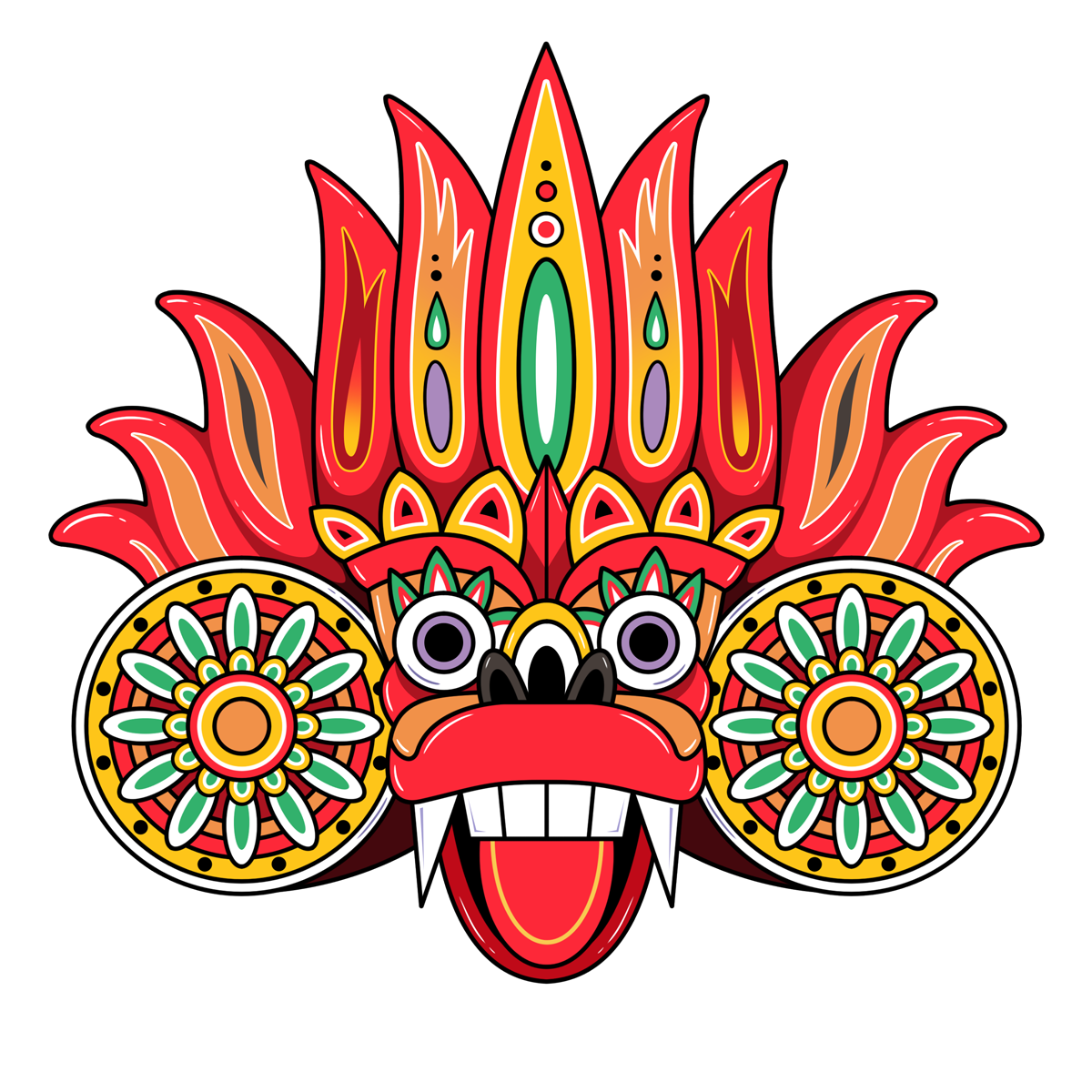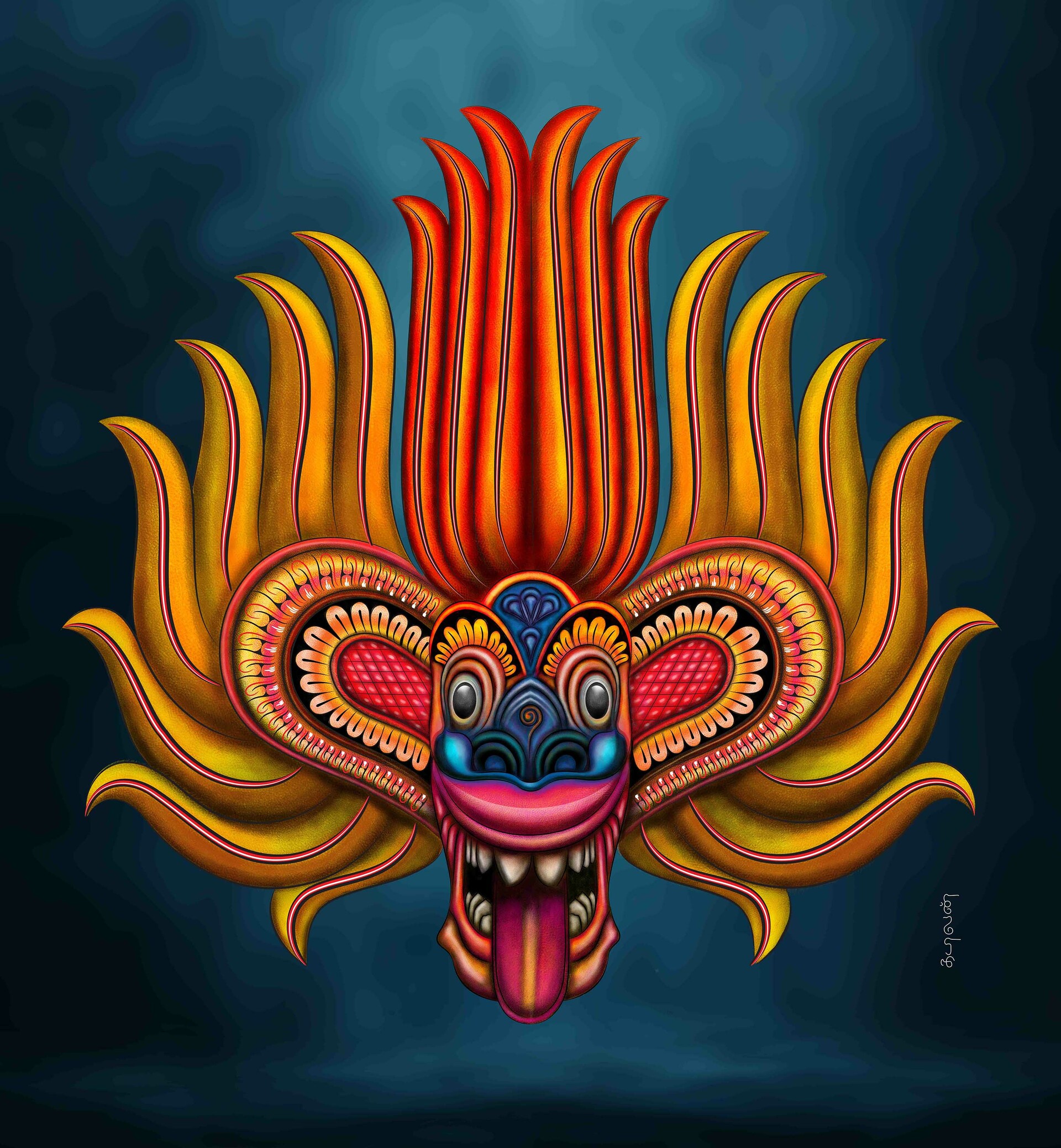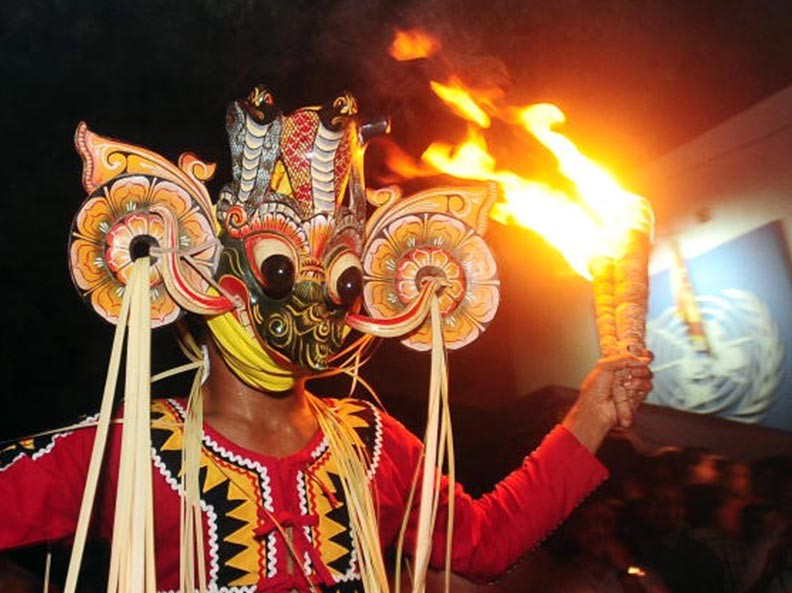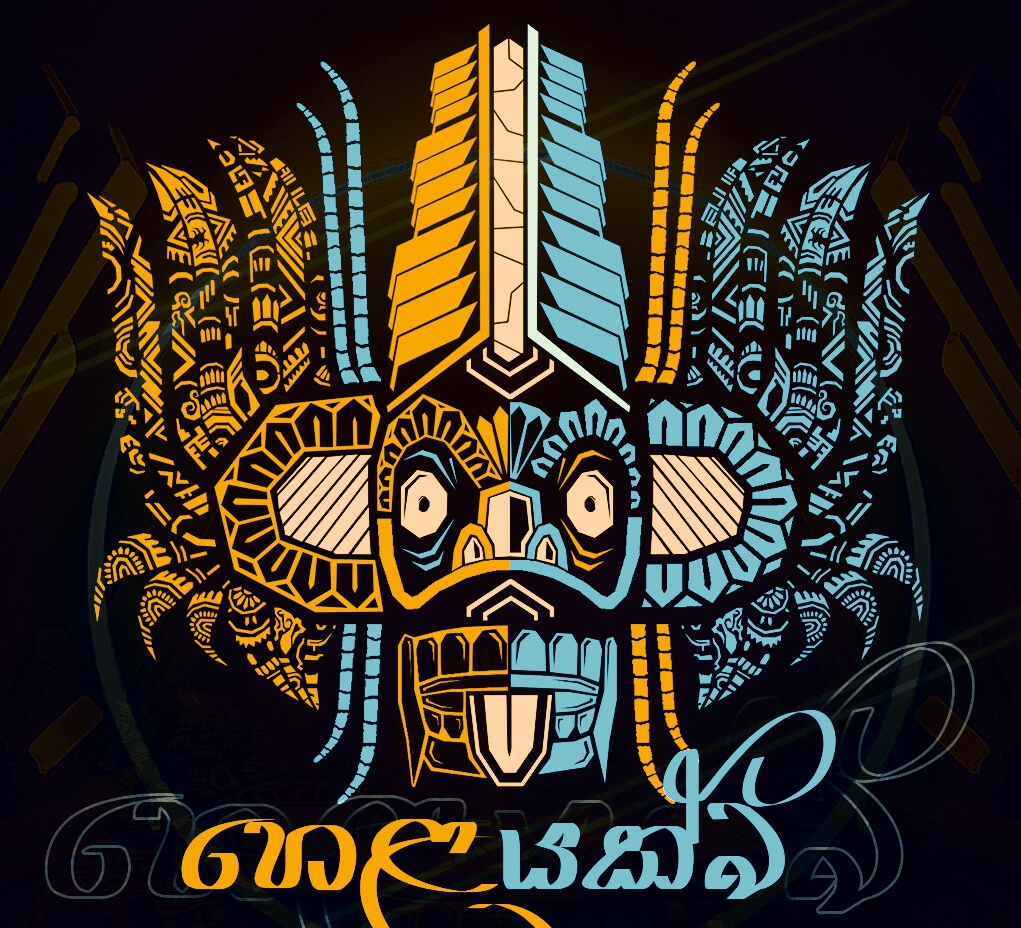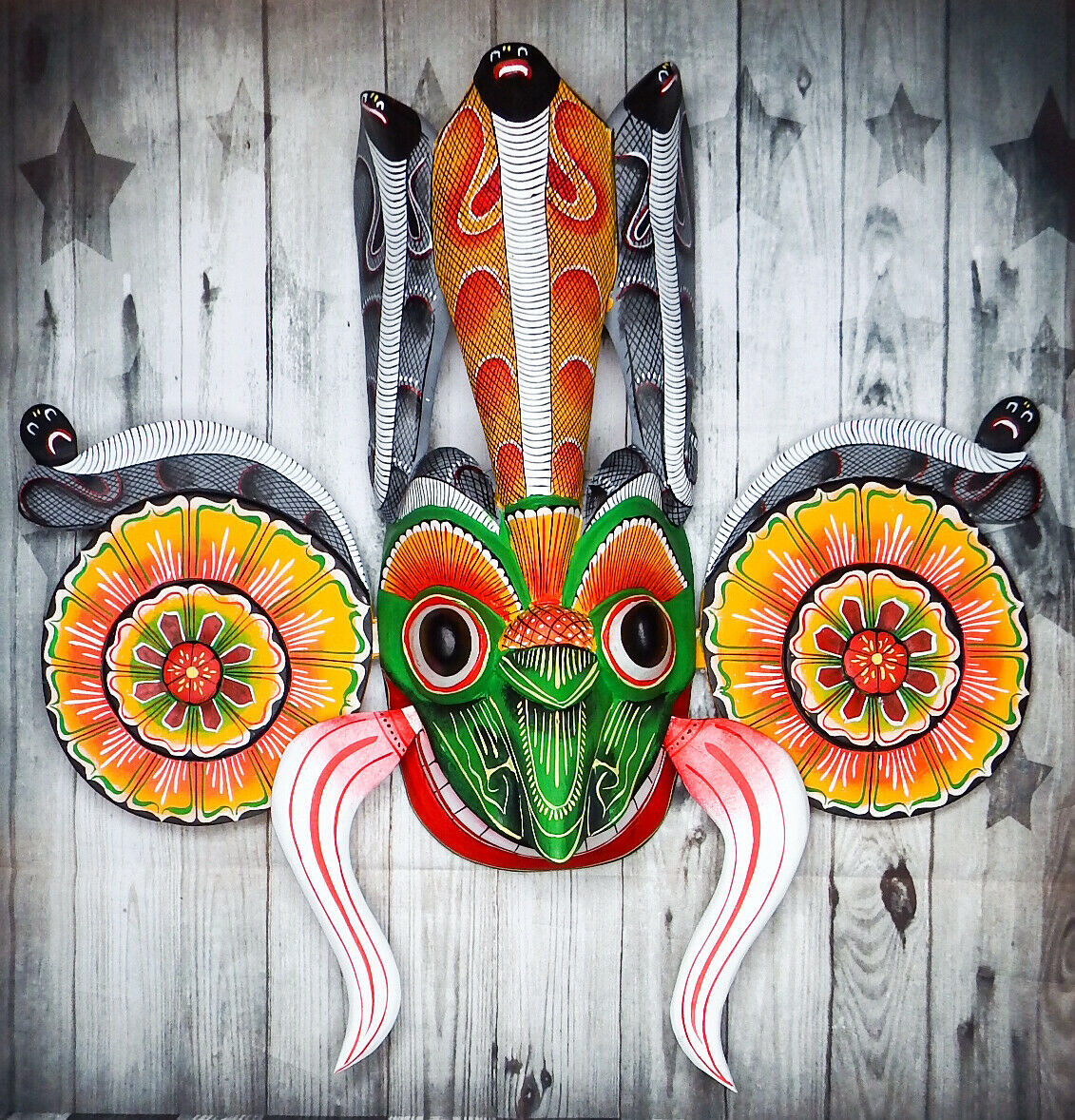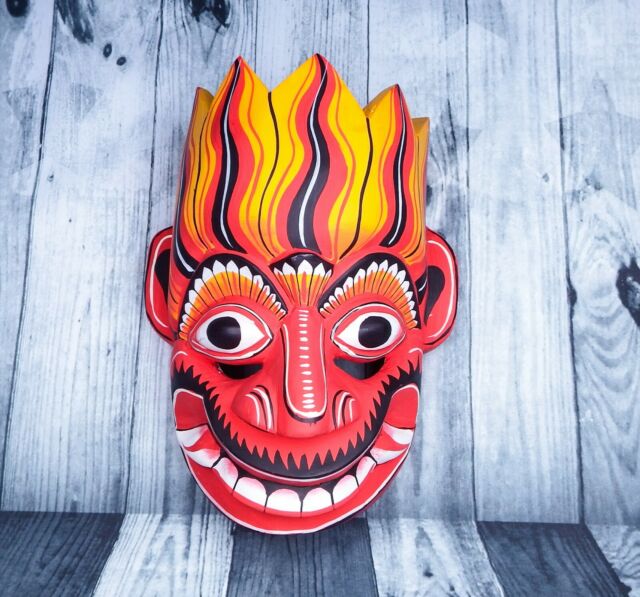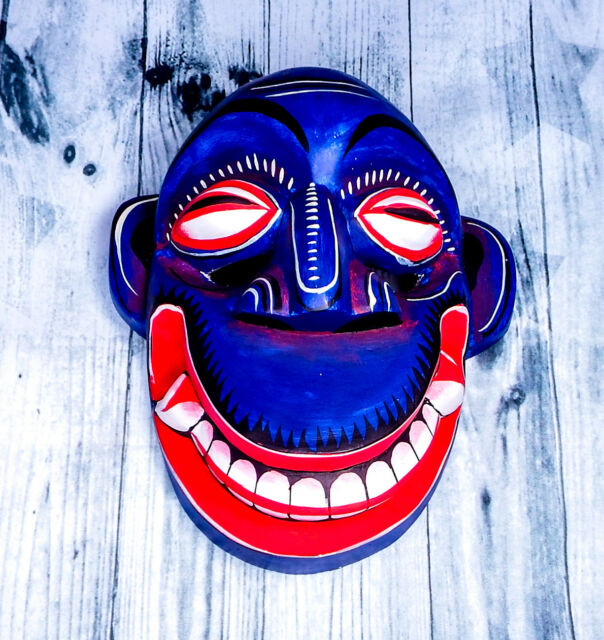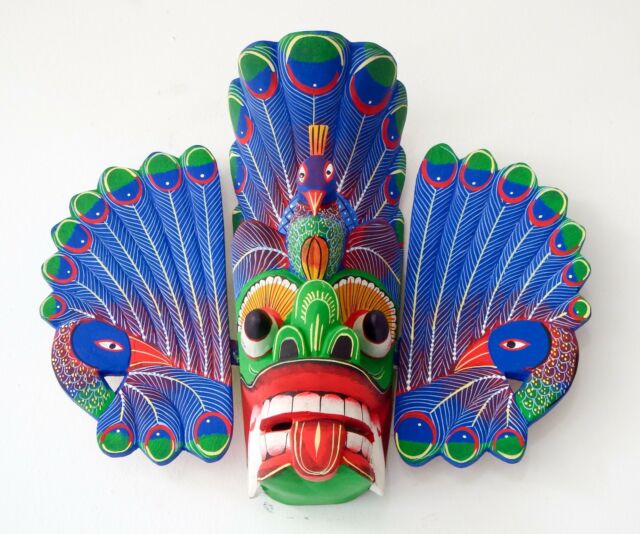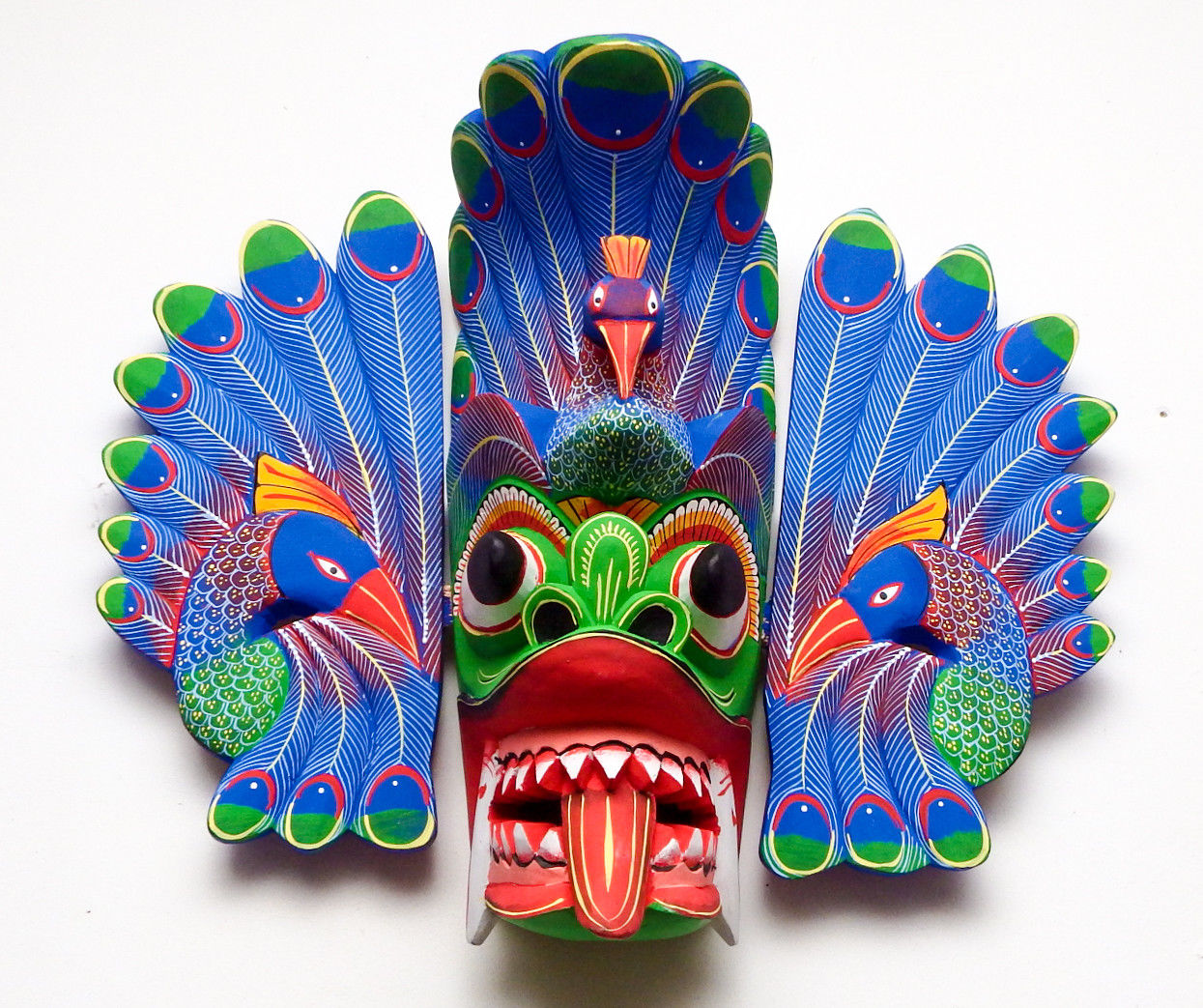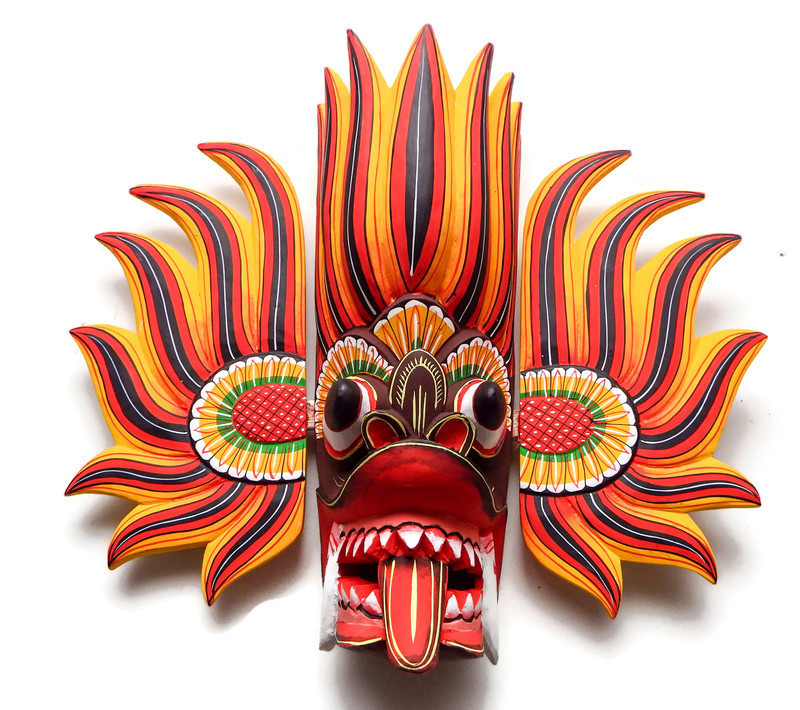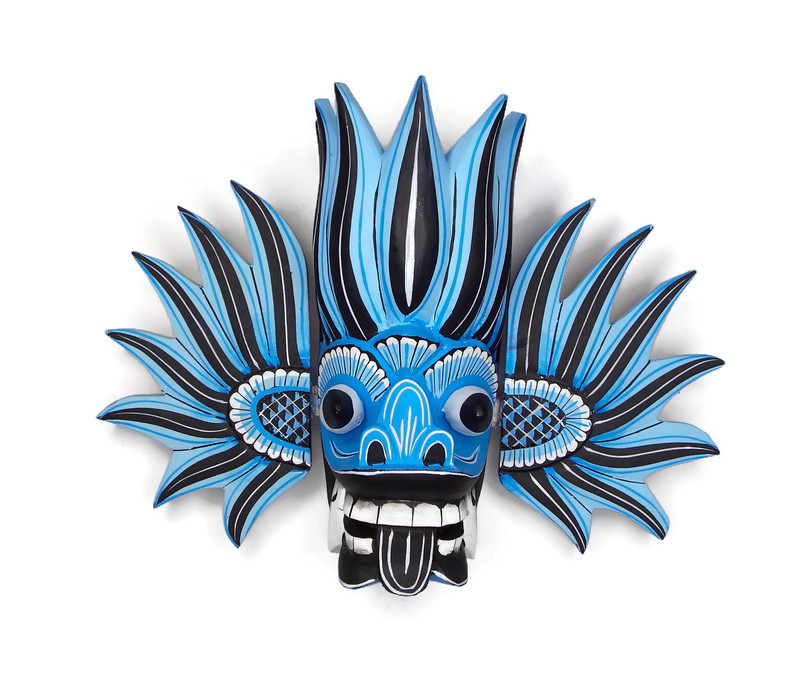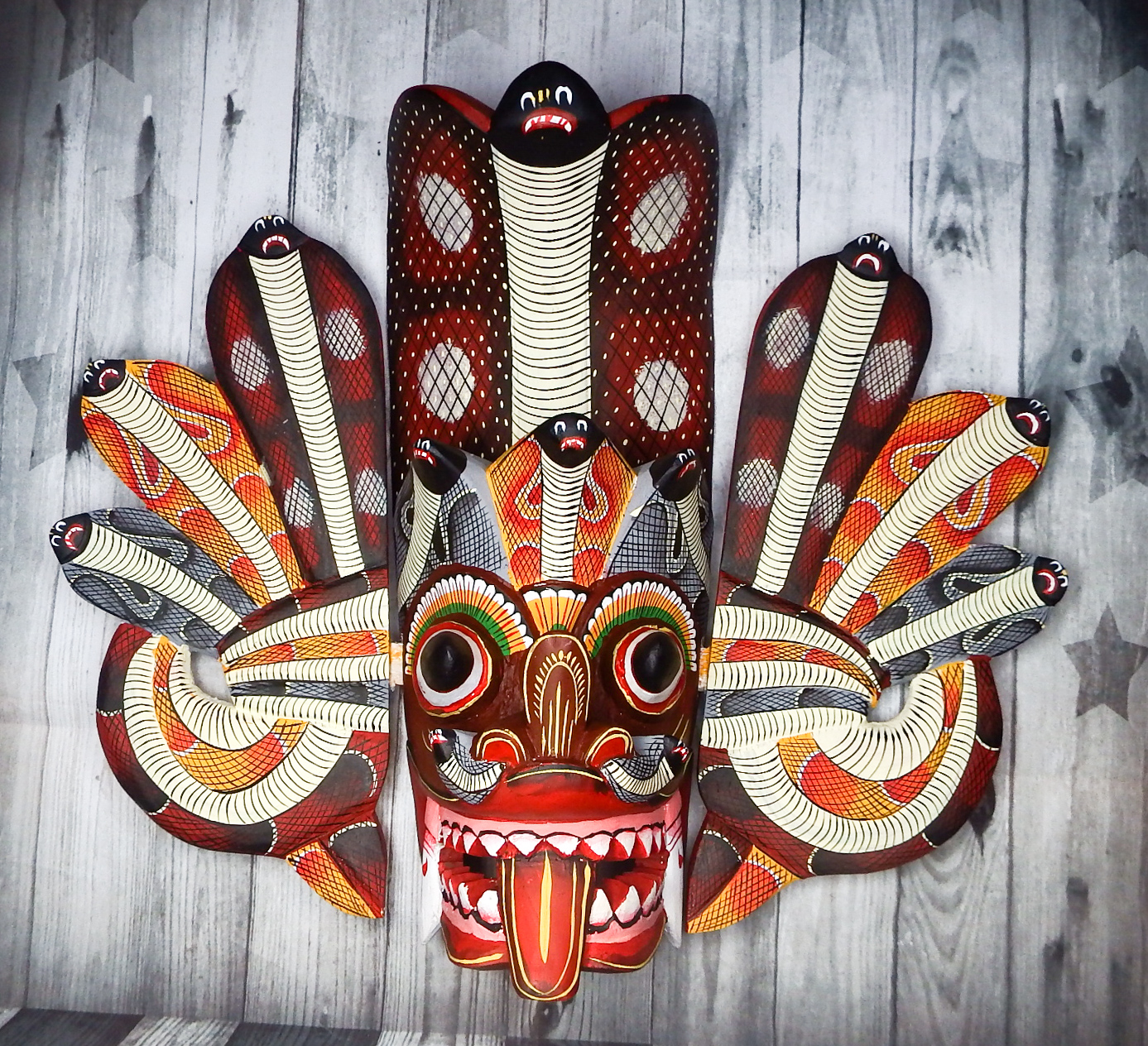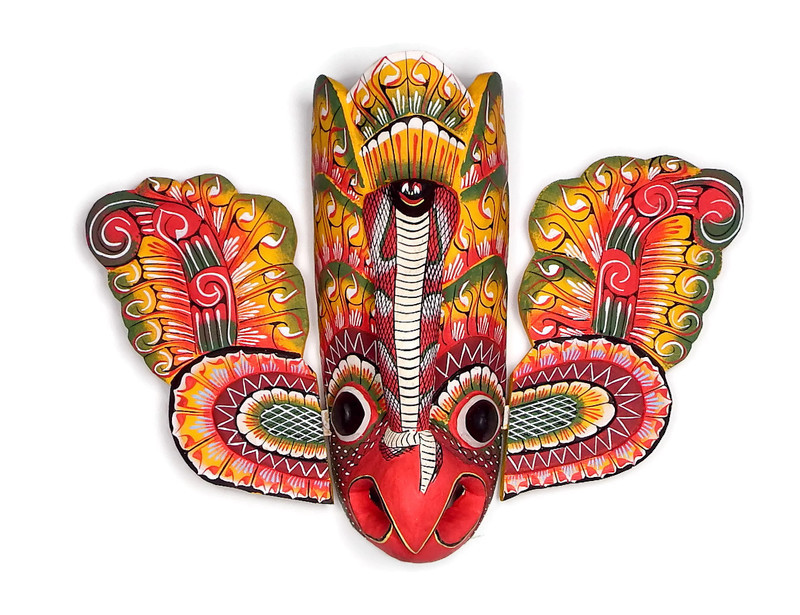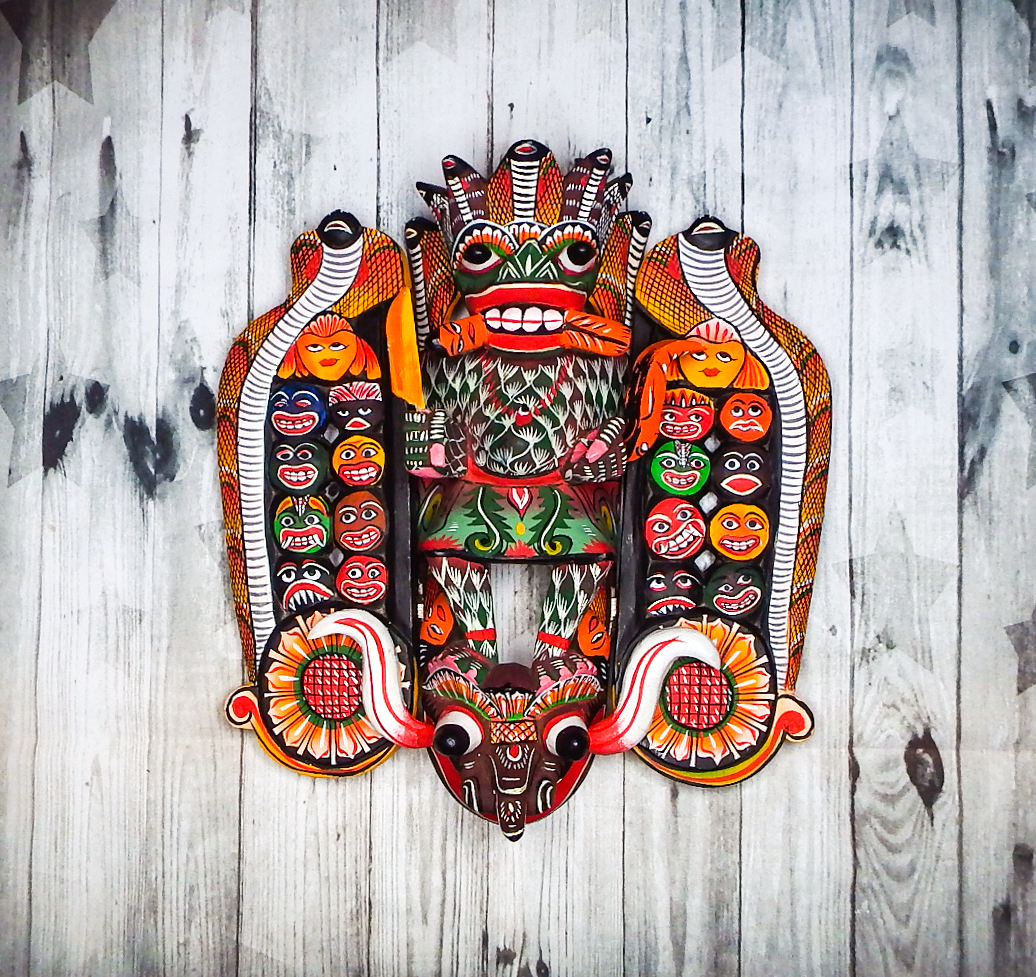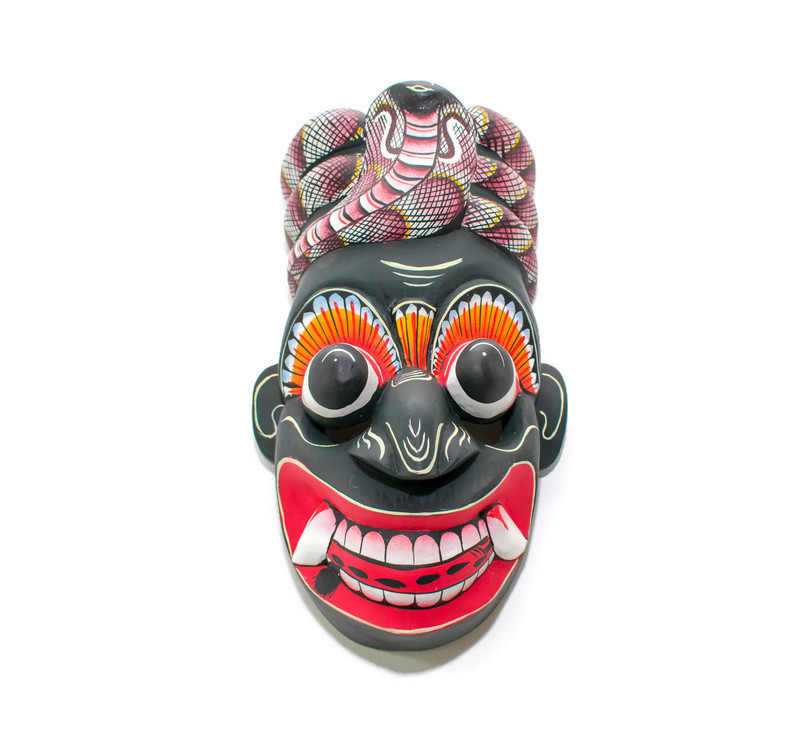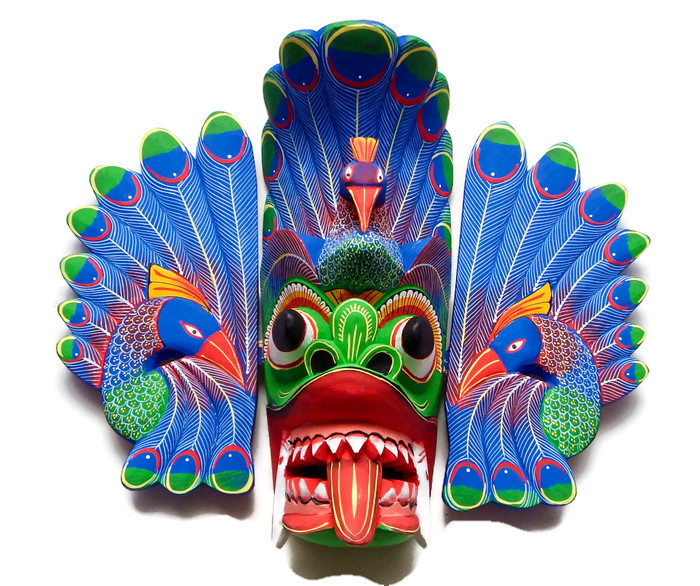Masks in dance
Mask dances could be divided into three major categories: classical mask dance, folk mask dance and ritual mask dance. Mask dance in classical dances are rare compared to the mask dance found in ritual and folk mask dance. In some classical mask dance items the masks cover the face fully. Some are side face covered masks like those found in Kathakali, the classical dance of Kerala.
Most of these dances use the craft work kreedam (crown). In Bharatha Natyam, a branch which developed in the 20th century, was
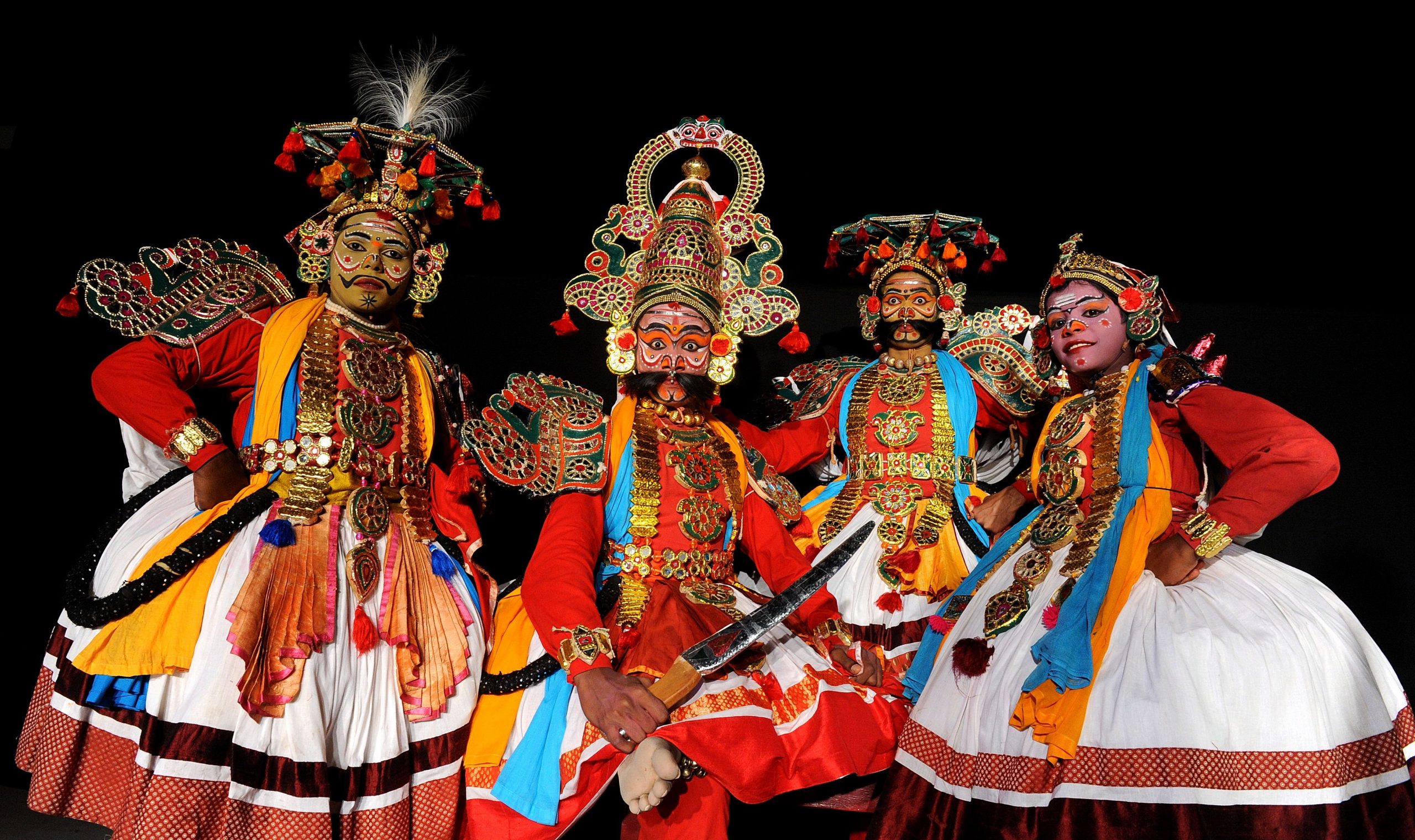 |
|
A Therukoothu dance performance |
called dance drama . Different types of masks are used in dance drama according to the needs of the selective characters of the diverse themes. These characters use fully covered face masks.
These masks are mostly made out of certain soft wood which is easy to carve according to the craftsman’s needs. Even dancers in productions like Ramayana use masks which cover the face fully for certain characters like Hanuman, Sukreevan, and Vaali.
Mask making is an excellent and unique talent. It is a good craftsmanship. Many of the families took this profession as family heredity. Unfortunately, such craftsmen do not get much recognition in the modern society. While making the masks the mask maker must express the real facial expressions of the selective characters clearly.
Classical mask dances, and folk mask dances have certain norms. Both provide equal opportunity for creativity within the limited frame work. All the classical and folk dances have certain defined clarified items. The items of the classical mask dances and Folk mask dances have their own defined order. They use certain selected ornaments, and designed costumes. Simillarly each and every Classical and Folk mask dance is based on certain selective music.
Some are accompanied with vocal music alone while some are only accompanied with instrumental music alone.Others are accompanied with vocal music and instrumental music together. Hence all the classical and folk mask dances have a rich, historical background, and longstanding historical developments. Some of the folk mask dances are practised only for certain festivals, and for certain occasions, by a certain caste or clan annually.
Before the introduction of cinema, drama was quite popular among the common masses for entertainment purposes. In Tamil folklore, Naadukoothu , and Therukoothu were quite popular. Both these Koothu forms used masks to depict the characters. Due to the arrival of cinema, teledramas, TV, and home vedio systems, these traditional art forms lost their values and demands. Many of the hereditary actors abandoned these professions, and switched on to other professions. Terrorism in Sri Lanka for the past three decades is also one of the major causes for the downfall of these folk based mask dances.
One of the most popular mask dances of Southern Sri Lanka is Kolam . Different characters are involved in this dance, and beautiful carved masks are used according to the needs of the story. Kolam was originally considered a mask dance form for amusement, but it has a divine origin. Ritual mask dances are also naturally found in Sri Lanka. Generally these ritual mask dances are used for religious,
magical and ritual purposes. This particular variety of dance takes place in open spaces.
Another important mask dance of South Sri Lanka is Sanni Yakuma .There are altogether 18 Sanni Yakuma demons to cure eighteen types of diseases. Each Sanni demon has a particular name and each demon is suppose to heal certain ailments.The dancers represent these demons by wearing specific masks, black coloured costumes and the skirts decorated with leaves.
In West Bengal there are two popular mask dances practised during the Sun festival. Chhau is a ritual dance, and it is also a group dance. Gamphira is another Bengali mask dance but it is essentially a solo dance item.
Mask dance is popular around the world like other dance forms. They are based on their own traditions, and cultural backgrounds









